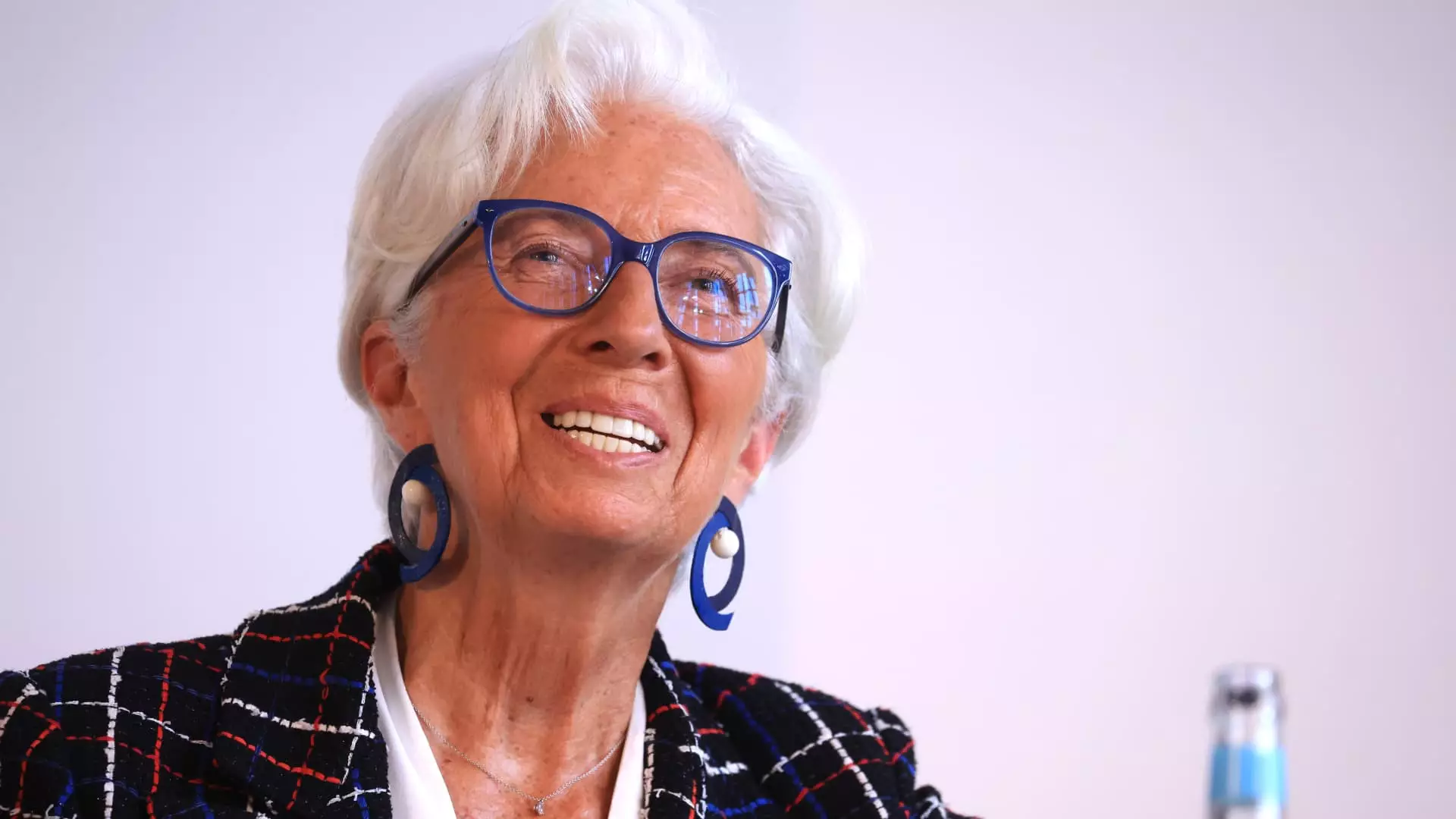The recent announcement by the European Central Bank (ECB) regarding a 25-basis-point reduction in interest rates signaled a pivotal moment in the economic landscape of the Eurozone. The cut, taking the deposit facility rate down to 2% from a mid-2023 high of 4%, underscores a delicate balancing act between stimulating growth and managing inflation—a task that has proven more intricate than many policymakers anticipated. However, this adjustment, centered on the backdrop of a stronger euro and declining energy costs, raises a myriad of questions regarding the future trajectory of economic growth in the region.
The ECB’s rationale reflects not merely a reaction to current market conditions but an updated assessment of the inflationary landscape. While traders had nearly predicted this outcome, the decision nonetheless represents a significant shift in position. Unfortunately, it appears that in addressing one concern—inflation—the ECB may inadvertently expose another, namely, the stagnation of economic growth which looms large amid these moves.
Promising Signals or Stagnant Growth?
To fully grasp the implications of the ECB’s recent decisions, one must consider the underlying trends in Eurozone inflation and economic activity. A recent drop in inflation rates to 1.9%, below the ECB’s target of 2%, paints a picture of cooling prices, yet this represents a double-edged sword. While a lower inflation rate is generally favorable, there exists a dangerous complacency in such figures, especially when economic growth remains tepid at best. The GDP growth rate reported at merely 0.3% for the first quarter of 2025 is emblematic of a broader stagnation that threatens the recovery.
Moreover, the ECB’s upward revision of core inflation expectations from 2.2% to 2.4% for the current year reflects a growing concern that while short-term inflationary pressures may ease due to falling energy prices, deeper structural issues related to wages, consumer spending, and business investments remain unaddressed. In essence, the ECB may have acted too hastily, moving to reduce rates under the false premise that a lower borrowing cost alone could stimulate an economy starved for genuine growth.
Geopolitical Tensions: An Overhanging Cloud
The specter of geopolitical strife, particularly stemming from fluctuating relations with the United States, complicates matters further. The potential impact of U.S. tariff policies on European industries such as steel and automotive production creates uncertainty that can stifle investment and undermine consumer confidence. With the ECB facing both internal and external pressures, the question looms: how can a modest rate cut counteract the significant headwinds posed by external trade tensions?
Notably, the ECB acknowledges the possible long-term benefits of government investments in defense and infrastructure as a countermeasure to current uncertainties. However, reliance on government spending as a stimulus can be a treacherous gamble when coupled with an economy already wrestling with growth limitations. This scenario poses a stark contradiction; the ECB is caught in a situation where easing monetary policy may not necessarily translate to economic revival.
Anticipating Future Economic Trajectories
Looking forward, the ECB’s forecasts hint at a moderate recovery, projecting an average inflation of 2% for 2025, compared with earlier estimates of 2.3%. Yet, such modest revisions reflect underlying fragility rather than robust confidence. With trade policy remaining shrouded in uncertainty and economic growth forecasts stagnating, the ECB’s small victory in curbing inflation comes at a greater cost—a nagging hesitation in investment and consumption that may very well keep the Eurozone trapped in stagnation.
In an ideal world, the ECB’s measures would catalyze a newfound enthusiasm in the Eurozone economy. However, the harsh reality is that without addressing the core structural issues that inhibit growth, lower interest rates could end up merely greasing the wheels of mediocrity, leaving Europe to grapple with persistent economic malaise in the face of an increasingly complex global landscape. Thus, while the committee’s decision reflects a likely cautious optimism, the broader implications tell a different story, suggesting a need for renewed vigor and decisive actions to truly spur economic revival.


Leave a Reply